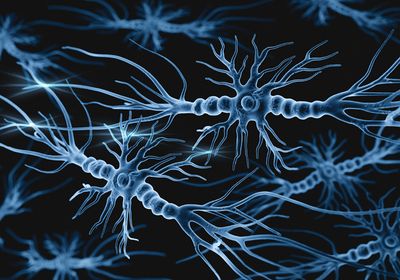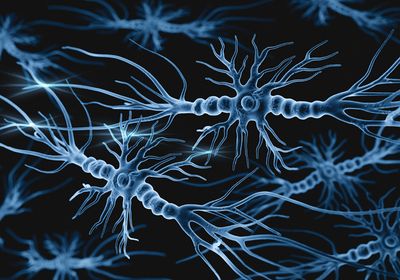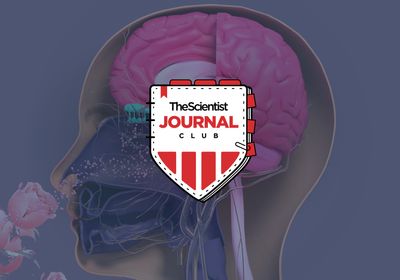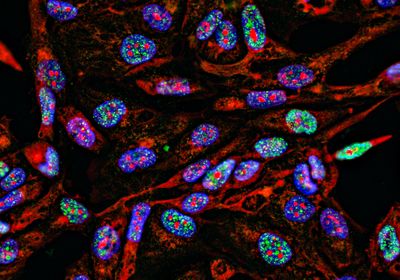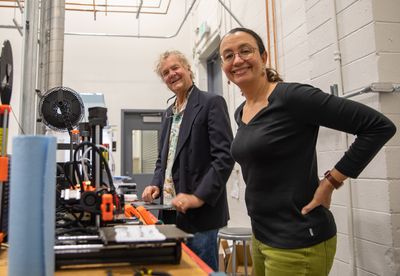ABOVE: Interneuron migration helps the brain form functional signaling networks. © iStock, koto_feja
Brain development is a carefully choreographed dance. Neurons develop specialized functions and, in small hops, move through the brain to get into the correct position. The chemical signals coursing through the resulting network allow animals to think, feel, and live.
In neurodevelopmental disorders (NDD), however, hundreds of mutations in the DNA can interrupt this process. But scientists still do not know how each of these mutations interrupts the neurons’ precise differentiation or migration patterns. Studying these defects directly in embryos or newborns is too dangerous, and other animal models may deviate from human development.
In a new study published in Nature, Sergiu Pașca, a neuroscientist at Stanford University, and his team combined assembloid technology with CRISPR gene editing to determine the role of neurodevelopmental disease genes during typical brain development and the mayhem that ensues when they are missing.1
See also “Sergiu Pasca Builds Brains to Study Developmental Disease”
“We finally have this long list of genes that cause autism,” Pașca said. “The question is, how do we understand their function, especially in the context of how complex human brain development is?”
The answer might lie not in the skull but in a dish.
For the past ten years, scientists have been able to turn stem cells into brain organoids, three-dimensional clumps of cells that grow similar cell types and structures as a human brain.2 Six years ago, Pașca’s team took this technology one step further and fused two organoids, where each organoid represented a different brain region.3 This new model, called an assembloid, allowed scientists to artificially simulate interactions that occur within the brain.
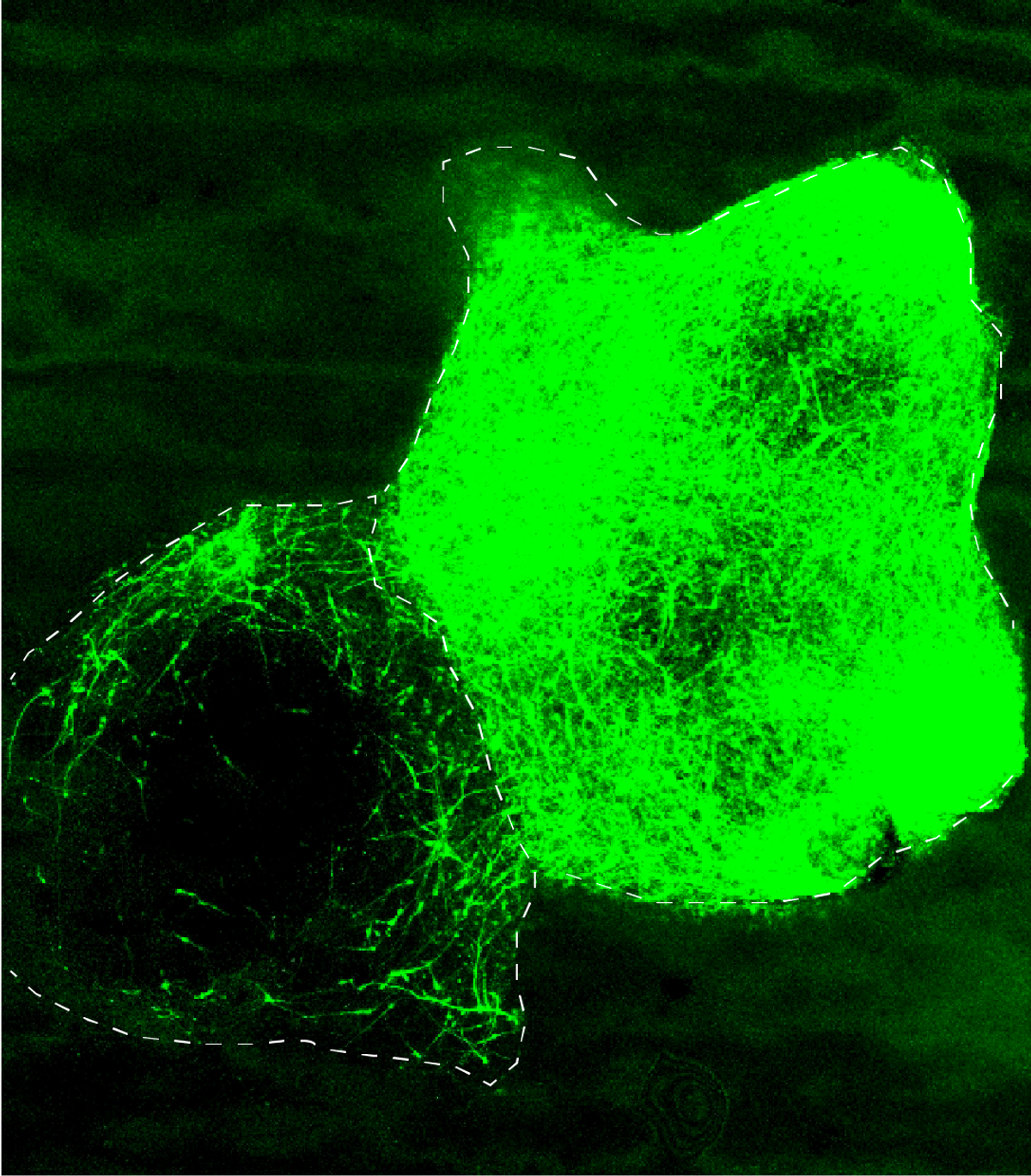
The new study focused on interneurons, which carry critical sensory and motor signals in the brain. During development, these neurons move from one part of the forebrain to another part where they regulate excessive firing of other neurons, a process that some suggest is disrupted in neurodevelopmental disorders.4
See also “Innovation in a Dish”
Pașca’s team generated more than 1,000 organoids mimicking the parts of the forebrain where interneurons begin and end their journey: the subpallium and the cortex. In each subpallium organoid, they used CRISPR gene editing technology to eliminate one of 425 neurodevelopmental disorder genes curated by the researchers. Then they generated assembloids by fusing gene-edited subpallium organoids with cortex organoids. By labeling the interneurons with a molecule that emits green light, they could track interneuron generation and movement between the two halves of the assembloid.
The researchers found that 11 percent of neurodevelopmental disorder genes played essential roles in interneuron function. In the absence of certain genes, interneurons failed to form at all. Eliminating other genes kept interneurons from moving from the subpallium organoid to the adjoining cortex organoid. Deeper investigation into one gene, LNPK, revealed that it disrupted the movement of subcellular structures in interneurons, which kept the cells from being able to travel through the brain.
“We've reached the point where we can now literally take hundreds of genes and collectively map their roles onto stages of human brain development that were previously inaccessible,” Pașca said. He believes that this approach can help identify new disease-causing genes. “Once we identify all of the genes that are interfering within interneuron migration, there may be genes that we don't even know are causing disease because the patients are too rare.”
See also “Brush Up: What Are Organoids and How Are They Made?”
Kristen Brennand, a geneticist at Yale University who was not involved in the study, said that this study offered a more physiologically relevant human brain context compared to previous studies that used neural progenitor cells. However, she emphasized the importance of repeating the study using more samples. “Three different people can inherit the same risk gene, and one will have autism, another schizophrenia, and a third is unaffected,” she noted. “Rare NDD genes don’t act in isolation.”
Pașca recognizes that interneuron migration may only drive a subset of cases of neurodevelopmental disorders, but he believes that finding these key disease processes can inspire new drugs to treat or repair the defects. His team has started dissecting how these genes might affect interneuron function.
“My lab is known for developing tools, but that was never really the goal,” Pașca said. “My goal is to really try to understand the biology of severe psychiatric disorders.”
References
- Meng X, et al. Assembloid CRISPR screens reveal impact of disease genes in human neurodevelopment. Nature. 2023.
- Lancaster M, et al. Cerebral organoids model human brain development and microcephaly. Nature. 2013; 501(7467):373-9.
- Birey F, et al. Assembly of functionally integrated human forebrain spheroids. Nature. 2017; 545(7652):54-59.
- Peñagarikano O, et al. Absence of CNTNAP2 leads to epilepsy, neuronal migration abnormalities and core autism-related deficits. Cell. 2011; 147(1):235-46.
